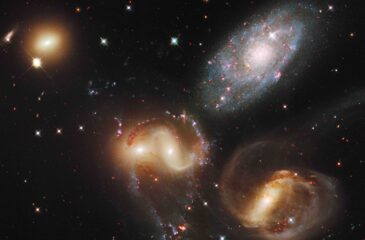Post Tagged with: "DLAs"
-
En galaksegruppe i det tidlige Univers
Ved hjælp af Hubble-teleskopet har et internationalt hold af astronomer, ledet af forskere fra Cosmic Dawn Center i København, undersøgt en galakse set næsten 11 milliarder år tilbage i tiden. I modsætning til vanlige observationer blev galaksen dog ikke opdaget ved hjælp af det lys den udsender, men ved det lys den absorberer. Selve galaksen unddrager sig observationer, men har til gengæld mindst én nær nabogalakse. Tilsammen udgør disse galakser en tidlig gruppe, som senere kan udvikle sig til at ligne den Lokale Gruppe, som vi bor i.
-
A galaxy group in the early Universe
Using the Hubble Space Telescope, an international team of astronomers led by researchers at the Cosmic Dawn Center in Copenhagen, have investigated a galaxy seen almost 11 billion years back in time. Contrary to typical observations, the galaxy was discovered not by the light it emits, but by the light it absorbs. The galaxy itself evades observations, but has at least one nearby companion. Together, these galaxies comprise an early group which may later evolve to resemble the Local Group in which we live.


